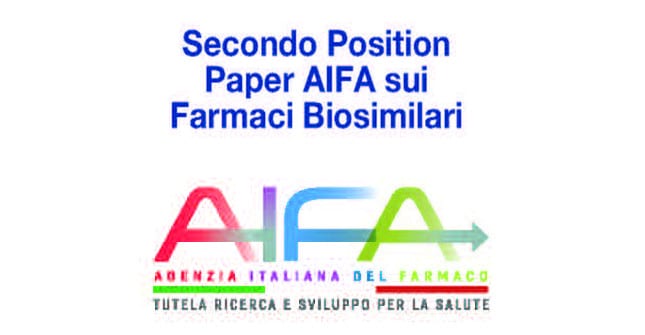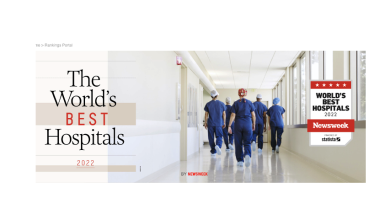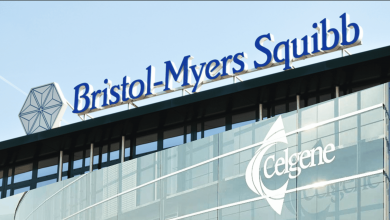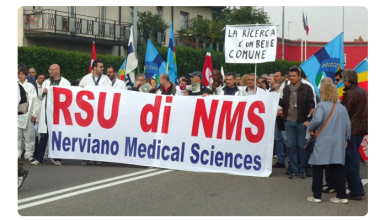
We present an excerpt from the Position paper of the Bruno Leoni Institute (IBL) on biosimilar drugs.
 Medicines are not comparable to other goods, and their curative function fuels the tendency to exclude them from normal market dynamics. Consequently, access to medicines is formally guaranteed.
Medicines are not comparable to other goods, and their curative function fuels the tendency to exclude them from normal market dynamics. Consequently, access to medicines is formally guaranteed.
In fact, if universal health seems 'free', it is not at all: tax payers pay for it, through public spending, and the economy itself which revolves around health, through the investments necessary for the development of services and products. Health, therefore, has a cost, made up of fixed components and other more variable ones. Among the latter, pharmaceutical expenditure,  precisely because among the most regulated and monitored throughout the supply chain, it is the one that lends itself most to cuts to obtain savings.
precisely because among the most regulated and monitored throughout the supply chain, it is the one that lends itself most to cuts to obtain savings.
However, there are some shadows: both the concept of universal and fundamental right to health is the case, for example, of prescription for active ingredients, or of 'conflicts of interest' between savings objectives and treatment objectives. Finally, it is the case of biosimilar drugs with respect to the originators.
The concept of "biosimilar drug" was introduced by the European Union Directive 2001/83/EC, transposed in Italy by the legislative decree n. 219/2006, according to which "when a biological medicinal product similar to a reference biological medicinal product does not meet the conditions of the definition of generic medicinal product due, in particular, to differences in raw materials or differences in the production processes of the biological medicinal product and of the reference biological medicinal product, the applicant is required to provide the results of the appropriate preclinical tests or clinical trials relating to these conditions" [ed: art. 10 paragraph 7]
The development of biological medicines is not immediately and easily transferable from one laboratory to another, unlike traditional medicines, leading the scientific community to conclude that the production process of these medicines is so characteristic that it itself constitutes, in a certain sense, the finished product.
From these differences emerges the need to provide for a different and more complex authorization process for biosimilars compared to generic drugs.
In 2017, consumption of the eight biosimilar molecules on the market in Italy grew by 74% compared to the previous year, reaching 19% of total consumption (originators and biosimilars).
It is absolutely necessary for there to be clarity and exact definition of the responsibilities of each of the institutions involved in health protection, to prevent the already precarious balance between savings needs, the right to health and the need for a return on investment in research and development do not compromise now one now the other of these needs.
The marketing authorization procedure for biosimilar medicines, envisaged in the guidelines periodically published by the EMA, is different from that envisaged for generic medicines. While for the latter it is sufficient to present the results of bioequivalence studies, biosimilars – containing an active ingredient similar, but not identical to that of the reference biological medicinal product – require demonstration of its comparability with the originator product.
 The Italian legislation establishes that only the EMA and the AIFA can ascertain the existence of a biosimilar relationship between two products, that in any case the "automatic substitutability" between the reference biological drug and the biosimilar or between biosimilars is not permitted, and that consequently AIFA cannot include biosimilar drugs in the transparency lists.
The Italian legislation establishes that only the EMA and the AIFA can ascertain the existence of a biosimilar relationship between two products, that in any case the "automatic substitutability" between the reference biological drug and the biosimilar or between biosimilars is not permitted, and that consequently AIFA cannot include biosimilar drugs in the transparency lists.
Among the interpretative doubts addressed by the regional administrative courts and by the Council of State, the most important concern on the one hand the recognition of substitutability, on the other the recommendations and prescriptive constraints by the regions.
The most controversial issue that emerges from the jurisprudence on biosimilars is certainly that relating to the conditions and limits within which the Regions can encourage the prescription of certain drugs, to the detriment of others, by local health authorities and doctors, especially where this need is motivated not by clinical reasons, but by public finance.
The Council of State has recognized the unavoidable need for the recognition of therapeutic equivalence by AIFA, and the consequent illegitimacy of the regional measures adopted in the absence of this prior assessment.
Among the many balances at stake, the Council of State reiterates the respect for the prescribing autonomy of the doctor. The Regions, therefore, can certainly recommend the use of certain medicines, also taking into account a possible saving expected from this choice by doctors, while they cannot bind treating doctors and managers of health facilities to precise economic results, nor to all the more reason to monitor the degree of achievement of these results. The provision of defined objectives and their monitoring, in fact, inevitably affect the treating doctor, not guaranteeing the doctor's necessary autonomy in the evaluation of individual cases and individual exceptions to the recommendations of the regions (Cons. State, section III, no. 4546/2017. See also Lazio Regional Administrative Court, section III, no. 2671/2018, and Lazio Regional Administrative Court, section III, n.2650/2018).
 In March 2018, AIFA published a position paper to clarify its position on some of the issues raised.
In March 2018, AIFA published a position paper to clarify its position on some of the issues raised.
In the March 2018 document, AIFA added to the identified framework the consideration that - although the choice of treatment remains a clinical decision entrusted to the prescriber - the latter is also entrusted with the task of contributing to an appropriate use of resources for the sustainability of the health system".
However, considering that "the risk-benefit ratio of biosimilars is the same as that of the reference originators" – AIFA "considers biosimilars as products that are interchangeable with the corresponding reference originators". Furthermore, this consideration applies "both for naïve patients and for patients already under treatment".
How can a system be truly universalistic in which pharmaceutical expenditure must be "commensurate with actual financial resources, which condition the quantity and level of healthcare services", [Constitutional Court, n. 356/1992] and in which the prescriber is entrusted with the task not only of treating patients, but "of contributing to the appropriate use of resources for the sustainability of the health system"? [AIFA, Second AIFA Position Paper on Biosimilar Medicines, 27 March 2018, p. 22].
In a healthcare system that proclaims that it universally guarantees the right to health, the risk is that this common thread generates an illusion of access to care which, on the other hand, hides a much more complex and critical reality. The cost certainly cannot represent a priority criterion of choice for the regulator, if only with respect to other criteria such as health safety and people's health, in a model that really wants to be called universal.
The risk that the technical/scientific assessments that should guide the action of the legislator, AIFA and the regions end up favoring financial needs over clinical ones, thus jeopardizing the autonomy and freedom of doctors, with questionable effects both from the point of view of the objectives of cost containment and, a fortiori, from the point of view of the protection of collective health. General managers and doctors, in some cases, may find themselves having to resolve a real conflict of interest.
In this sense, it must be taken into consideration that greater resources saved by the regions on the cost of healthcare do not necessarily correspond to greater resources for citizens, but instead risk taking the form of sums of public money reused by the regions for purposes whose opportunity should at least be evaluated previously, from a cost-benefit perspective, with respect to pharmaceutical expenditure.
In general, therefore, the use of biosimilar or originator drugs should correspond to the different and specific cases, evaluated according to medical-scientific criteria by the attending physicians, independently and being able to enjoy responsibility and prescriptive freedom. A perspective, the latter, also confirmed by AIFA, which recently considered the discretion granted to the doctor as "a guarantee for patients".
A different direction, aimed at selecting treatments and therapies on the basis of accounting reasons, could compromise the right to health as conceived in our legal system. But that's not all: intervening downstream on the problem of the cost of public health is, for the umpteenth time, an attempt to deny the citizens themselves that that problem exists, effectively making it worse over time. If, on the contrary, we wanted to correctly address the problem from its roots, we should declare in a transparent way that the national health system charges itself with a series of costs that not only exist, but which are, at present, less and less sustainable in the face of the universalistic goal.
This would be the way to start giving credit to healthcare models which, without failing in the duty to guarantee health, do not superimpose it on an exclusively public and performance model.
IBL extension. Biosimilars and the price of rights
Related news: Opportunities, problems and challenges for biosimilars: reflections on the Istituto Bruno Leoni briefing paper
Position AIFA paper on biosimilar medicines
EMA and the European Commission publish new information materials: Il video, the guide
The book. Forty years of the NHS. A reform betrayed between political gain and private interests.
Medicines subject to additional monitoring
IBL extension. The side effects of the new regulation of prescriptions
Quality healthcare is a universal right
Biosimilars, Pfizer asks the FDA for clarification on product communication
THE BIOSIMILAR MARKET FROM JANUARY TO JUNE 2018
In the first half of 2018, the 10 biosimilar molecules on the Italian market – Epoetins, Filgrastim, Somatropin, Follitropin alfa, Infliximab, Insulin Glargine, Etanercept, Rituximab, Enoxaparin and Insulin Lispro, for a total of 45 products – absorbed 12% of consumption against the 88% held by the corresponding originators.
On an annual basis, the pool of biosimilars present on the national market recorded an overall growth of 27.7% compared to the first half of 2017, calculated net of new entries, i.e. the new biosimilar molecules launched on the market only from June 2017 (Rituximab, Enoxaparin and Insulin Lispro), against a contraction of the biological originators of 1,6%.
Spotlights on the performance of the 3 molecules protagonists of the "overtaking" compared to the biological originator. Filgrastim achieved the highest degree of penetration on the market, whose 5 biosimilars on the market absorb 94.68% of the market in volumes (89.35% in values, at average price). Epoetins follow (75.39% of the relative market in terms of volumes and 62.12% in values), on the market in a biosimilar version, on a par with filgrastim, starting from 2009.
Even more notable is the performance of the most recently or very recently registered biosimilars: Infliximab, in the biosimilar version since February 2015 and holder in the first half of 2018 of 69.75% of the market in volumes (54.67% in values); Follitropin alfa, on track since April 2015 and today holder of 12.69% in volumes (12.36% in values); Insulin Glargine - the first biosimilar on the market since February 2016 - today concentrates 17.03% in volumes (12.64% in values). An even better result for Etanercept (on the market since October 2016), which in the first half of the year absorbed 29.03% in volumes (23.26% in values) and Rituximab, on the market since July 2017, which in the biosimilar version already concentrates 40.66% of consumption (26.28% in values).
The picture of consumption at the regional level is diversified but still growing. Valle d'Aosta and Piedmont record the highest consumption of biosimilars for all the molecules on the market: in both they share 41.89% of the market on the overall reference market and even 80.25% of the market referred to the five molecules on the market for at least 3 years (Epoetine, Filgrastim, Somatropin, Infliximab, Follitropin Alfa).
The same pool of older commercialized molecules obtains significant consensus in practically all the Regions (Tuscany, 70.24%; Veneto 64.27%; Sicily 59.52%; Liguria, 72.21%; Emilia Romagna, 63.89%). Rear lights Abruzzo (36,79%) and Calabria (14,95%).
The ranking varies by extending the analysis to all the biosimilars on the market: after removing the aforementioned primacy Piedmont and Valle d'Aosta are followed in the ranking by Sicily (18.82% of the total market), Basilicata (14.79%), Friuli Venenzia Giulia (13.341 TP3T), Tuscany (12.72%). All the other Regions are below the national average; taillights Puglia and Umbria which do not even reach the 5% of consumption.
Patent expirations and potential savings. According to a very recent analysis prepared by the IQVIA study centre, the market value of the main organic products that will lose their patent protection between 2018 and 2022 amounts to around 1 billion euros. For the seven molecules in question (adalimumab, trastuzumab, bevacizumab, insulin lispro, ranibizumab, teriparatide, pegfilgrastim), in the absence of competition from any biosimilar, a cumulative expenditure of approximately 5.6 billion is estimated over the next five years.
Assogenerics





